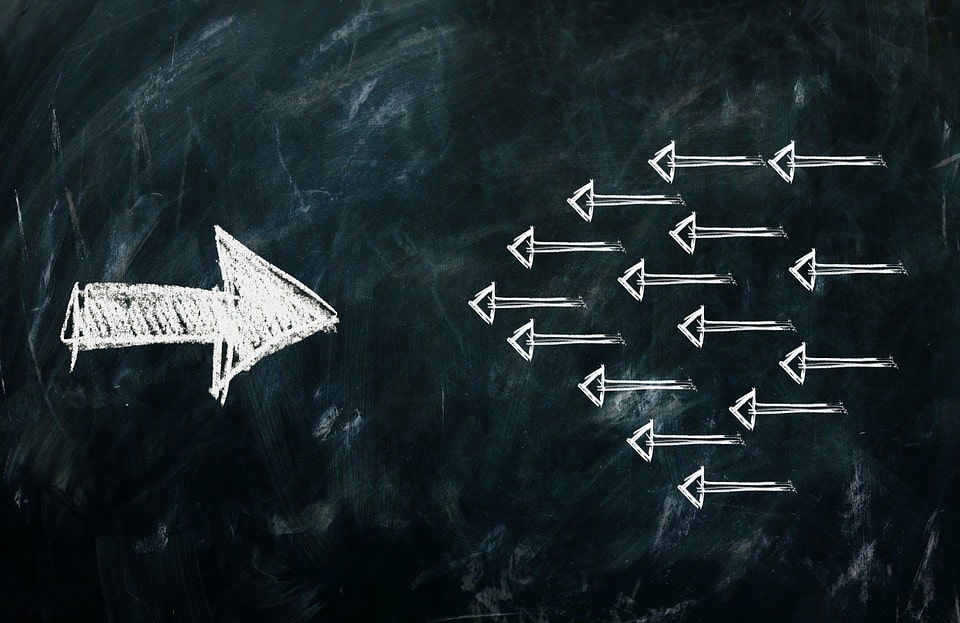
Captivate and engage
More and more studies confirm that employee engagement is one of the main secrets of any company’s success. But according to statistics, only a third of them really care about their work, the rest treat it like a chore. They come, “serve” the allotted time, performing the minimum of duties, and hurry home. As soon as such people get a more favorable offer, they immediately quit. And this does not mean that they are bad employees; they simply do not see any interest in their work.
From this point of view, the importance of employee engagement cannot be overemphasized, especially if we take into account the fierce competition to find the best people and the high cost of training new ones. Moreover, it is the lack of engagement that is often cited as one of the main causes of employee dissatisfaction, low productivity, turnover, lower profits, resistance to innovation and other common problems that any company faces from time to time.
To prevent them, a variety of strategies are used to increase employee engagement and motivation. One of the most effective ones is gamification, i.e. applying game mechanics (usually used in video games) to work tasks. In its most general form, it looks like this: employees are set a certain goal, when they achieve it, they are rewarded and move on to the next level of the game. What makes gamification such a popular corporate strategy?
It’s no secret that all people, from small children to old people, love games. The prospect of being rewarded for an action appeals to all of us. In addition, the hormone endorphins are released during playful activity and rewards, and as a result, people feel a sense of satisfaction with the result, which encourages them to play more.
Gamification breaks down a long work or training marathon into short, visible and observable steps. It encourages employees to achieve more and helps them track and visualize their progress. Finally, it inspires and enthuses people to become increasingly engaged, productive and skilled.
Basic rules
For gamification to work, you must set specific goals with measurable outcomes that can be achieved in a limited amount of time. You also need to outline the actions that will lead to those results, i.e. employees need to understand what they can do to accomplish the goal. For example, set the goal of your game – to increase the average check by 5% over the course of a month – and give each participant a list of examples of how and in what situations to offer a customer ancillary and complementary products to their main purchase.
The main rule of workflow gamification is fairness, establishing transparent, equal and consistent rules. At the very beginning, all employees should be in the same conditions. Each of them must understand what the game is about, what its goal is and how to succeed. And, of course, in no case should the rules be changed when the game has already started, or “playing along” with one or another participant.
When starting a game with your staff, don’t forget that there is a wide variety of people working in the pharmacy. While the majority are positive and enthusiastic about gamification, there will inevitably be those who do not want to participate in the game, so it should never be mandatory. Company management should also respect those who simply want to perform their duties calmly and diligently, without being fueled by the excitement and competitive spirit.
To have the desired effect, gamification must: – capture and hold the attention of participants; – challenge, engage and entertain them; – set achievable and measurable goals; – have clearly defined rules and objectives; – be accompanied by a transparent system of accumulating points, moving from level to level, receiving incentives and rewards; – have no clear losers; – involve voluntary participation.
Another important part of the gamification process is the incentives, the rewards that employees receive during the game. Tangible prizes can certainly be very effective, but keep in mind that true gamification is not a one-off competition but an ongoing process, so before you promise a trip to Egypt as a prize, consider whether you can fund such rewards in the long term. In addition, too great a prize may cause some people to “cut corners” – to cheat or use prohibited techniques to achieve the desired goal. For example, when competing in sales, front-desk clerks may be overly aggressive in pushing for additional purchases. This may increase revenue in the short term, but in the long term will result in a loss of customers.
In fact, the best corporate gamification programs have less to do with the size and brightness of the prizes than with the competition itself. For example, recognition itself is a powerful motivator, and the title of “employee of the month” is sometimes enough to encourage people to participate in the game. Other good examples are an extra day off, a free educational course or an interesting training session.
Speaking of rewards, there is another important nuance that cannot be overlooked. While gamification is designed to identify a “winner”, there should be no losers either. In addition to rewarding the person or team that won the competition, it is necessary to recognize the individual and collective achievements of other participants, to draw attention to the employees who were involved in the game and confidently went to victory, even if they did not become leaders.
Spheres of gamification application
Gamification is particularly well suited to tasks such as adaptation and professional training. The tedious reading of manuals and learning new rules can be turned into a fun process by adding game elements. For example, you can divide the material into smaller units using quizzes and a point system. Most people want to succeed when they first get started, so they will strive to win the quiz and are more likely to remember what they have learned for a long time.
You can also apply gamification to your employees’ professional development. Reward those who seek professional development opportunities with points and prizes at the end of the month or year. Chances are, employees who previously missed these chances will also want to participate in the game, and you’ll have a better-qualified pharmacy staff as a result.
Gamification helps people to accept any innovation more easily and makes routine tasks less boring and monotonous. Even in a “non-competitive” area such as inventory management, the use of gamification and rewards increases efficiency, attentiveness and engagement. Gamification can also help promote a pharmacy or pharmacy chain. For example, employees will be rewarded for positive customer reviews online or collect points for social media posts and shares.
Finally, gamification is a great way to increase sales, and you can have competitions between the front-line staff of a single pharmacy, as well as between several pharmacies in the network. This will still encourage both individual success and team spirit. And the award can be given not only for the largest revenue, but also for the most expensive sold goods, the largest average check, the largest number of dispensed goods or items. This approach will allow you to recognize not only the winner, but also the other participants of the competition.
Shutterstock/FOTODOM UKRAINE photos were used



